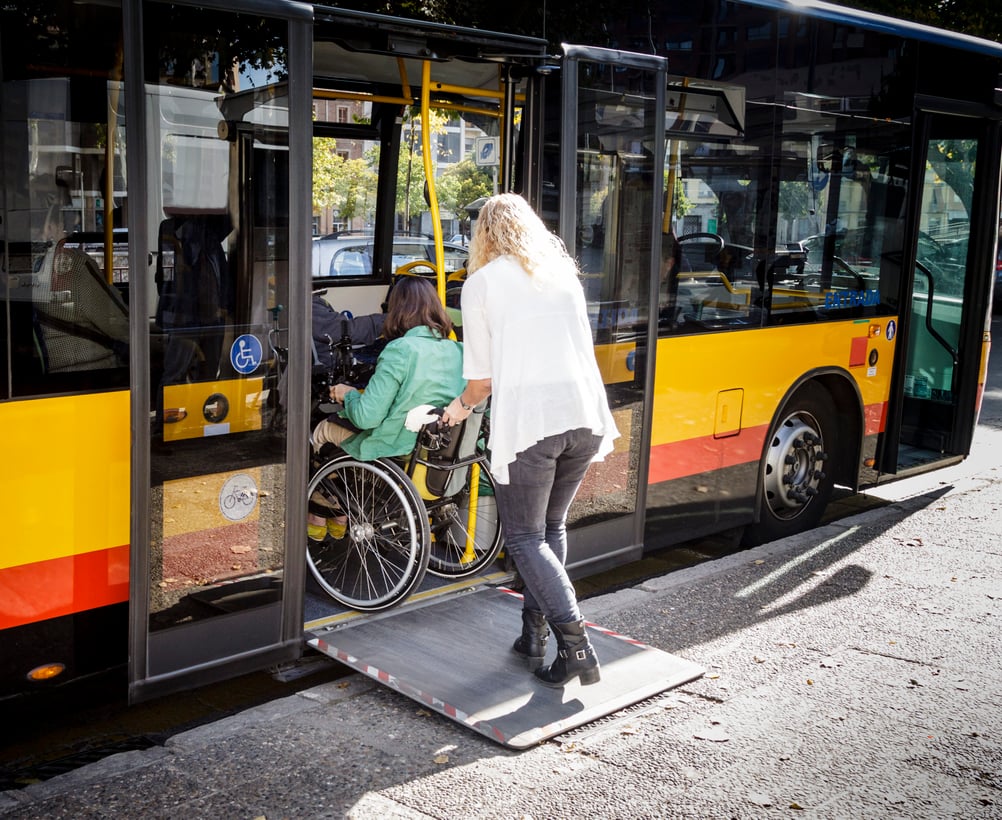An update of management systems for Paratransit is needed in Sweden. Operating costs are rising, passengers have higher expectations of service quality, and authorities are under pressure to reduce carbon emissions. Reducing trips — and cutting off thousands of Swedish people with disabilities from jobs, education, and essential services — isn’t an option, so how can authorities manage the growing crisis? By upgrading their software, more than 10 years old for many authorities, and improving the passenger experience in the process.
When compared with traditional transit, paratransit is more vulnerable to rising fuel costs, and likelier to produce proportionately greater emissions as trips rise, because services are carried out using adapted minibuses and private cars. Authorities usually buy services from private taxi companies, which are expensive compared to other transport modes. At the same time, older software makes it difficult to plan and coordinate trips so that all travellers get the best possible journey — and even harder to facilitate journeys that are shared between multiple travellers. Not only does this mean that vehicles are used inefficiently — creating higher costs — but also more kilometres driven per traveller, with a greater climate impact.
Inefficient processes for bookings management and passenger communication compound the problem, and additionally raise costs for authorities. For example, travellers often don't have access to digital booking methods or automatic trip reminders via phone and SMS, and can't track their vehicle’s arrival on a map in real time. As a result, travellers have little control over whether there are delays or changes to their journey, and staff spend a lot of time on the phone creating bookings and answering questions about a journey. This lowers productivity and drains resources unnecessarily. It will be difficult for public authorities to increase efficiency — both of actual routes and of management processes — without bringing in new, integrated digital solutions. Current systems often use old-fashioned travel management software with simple links to other systems, such as eligibility management, customer centre telephony, and analytics. In addition, these connections have often been added on an ad hoc basis over the years, making it difficult to further develop or comprehensively update the system.
Without an integrated, end-to-end solution, there is a greater risk of mistakes and all processes take longer. Software like this exists on the market — but up until now, authorities have been understandably hesitant to purchase international commercial software, out of concerns about language and data privacy, and a wariness of dependency.
Modern, cloud-based paratransit software solutions don’t have to spell an end to independence, or increase data security risks, and deliver results that are significant enough to more than justify the hassle of translation. At Via, we now work with a large number of European cities — London, Berlin, Paris, and Oslo — to deliver software to power their paratransit services. All these cities identified the same need: for a better passenger experience, and for improved operational efficiency to control costs. Statistics bear out the success of Via’s software: one partner saw a nearly 20% improvement in vehicle productivity, and another saw a 35% reduction in the total number of incoming calls (as riders can manage their own bookings and cancellations and check their vehicle’s ETA). Via’s software runs on a cutting-edge algorithm — refined over 100+ million trips delivered worldwide — which streamlines travel planning, increases coordination, and optimises trips. Algorithms can automatically schedule and generate directions, using realtime traffic data to improve on-time performance. The software increases the number of shared trips by continuously optimizing all bookings throughout the day to increase efficiency. The technology can also automatically subtly adjust the itinerary to best suit changing circumstances if something happens during the day (if a shift is added, a trip is cancelled, or a driver is late). Of course, in addition to automated tools, operators always still have access to a manual assignment and reassignment feature, because running a service still requires human contact.
Operational efficiencies are only the beginning: with cloud-based software, agencies reduce their risk of technical debt, as cloud-hosting facilitates continuous development and technology upgrades. With cloud solutions, agencies can easily take advantage of all the new features and updates a vendor has to offer. It's also faster for the vendor to quickly implement changes or bug fixes. With cloud based solutions you also have access to international vendors with sophisticated software that previously wasn’t accessible in Sweden. If authorities avoid looking outside the Swedish market, they risk reinventing the wheel — while at the same time not being able to match the power of self-improving algorithms built upon a large volume of trips. Without an upgrade in technology, authorities will find it difficult to meet the demand for paratransit travel on limited budgets. New technologies can help optimise vehicle use and improve the traveller experience. The same software can also ensure that paratransit is included in the increasingly digitised and integrated wider transport system, avoiding social exclusion at the same time our communities strive toward emissions targets.




